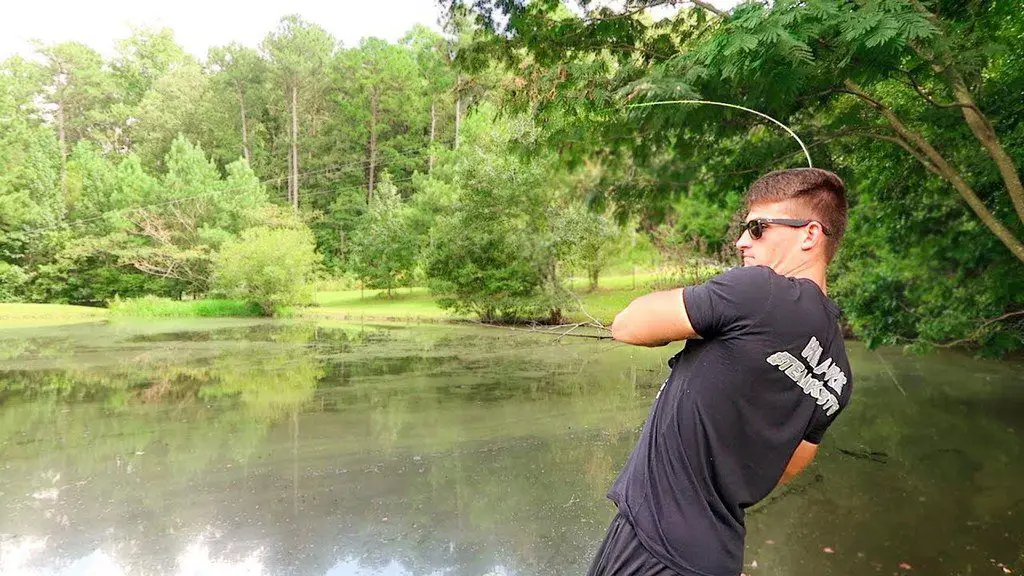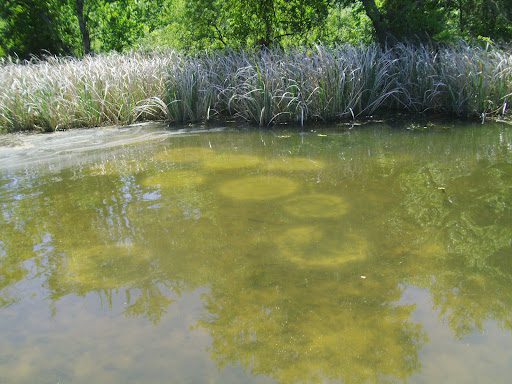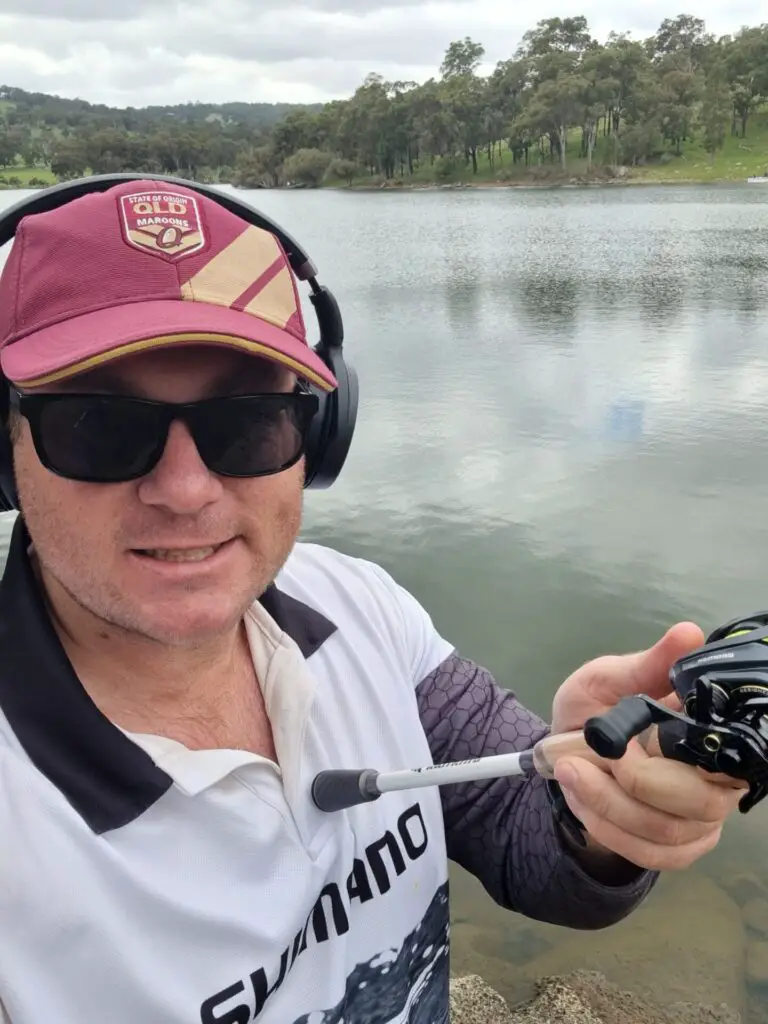Largemouth Bass spawn in ponds during the spring when water temperature ranges from 55 to 65 degrees Fahrenheit, typically between May and June. The spawn timing largely depends on environmental factors like water temperature, daylight, and food availability.

Table of Contents
Bass Spawn Calendar
Having spent many seasons bass fishing, I’ve been fortunate enough to witness the bass spawn several times. It’s an exciting time in the lifecycle of a bass and understanding the spawn calendar can give you a leg up when trying to catch them.
Bass spawning behavior generally aligns with the change in seasons, and winter is the quiet before the storm. The bass are deep in the water, conserving energy. As spring approaches and water temperature rises, they move into a pre-spawn phase.
| Month | Season | Bass Behavior |
|---|---|---|
| January – February | Winter | Bass are in deep water, conserving energy |
| March-April | Pre-Spawn | Bass become active and move towards spawning areas as water temperature nears 50 degrees |
| May | Spawn | Bass enter full spawning mode as water temperature rises towards 60 degrees |
| June | Spawn | Spawning continues but transitions into post-spawn behavior as water temperature exceeds 70 degrees |
| July – August | Post-Spawn | Bass are less aggressive and can be harder to catch |
| September – October | Fall | Bass feed aggressively in preparation for the colder months |
| November – December | Winter | Bass return to deeper waters and activity levels drop |
Pre-Spawn
In the pre-spawn phase, usually when the water temperature hits around 50 degrees Fahrenheit, largemouth bass become more active and move closer to the spawning areas. They prepare for the spawning season, building up energy reserves by eating more.
If you’re fishing during this period, focus on food-rich areas because this is where they’ll be.
Spawning Season
The spawning season occurs when the spring water temperature hits 55 to 65 degrees. This is typically during May and June, but environmental factors can shift the spawn slightly. The males create nests in shallow water, and the females join them to lay eggs.
This is a great time to catch bass because they are aggressive protectors of their nests.
Post-Spawn
Post-spawn occurs when the water temperature climbs above 70 degrees. The females will recover from the taxing process of laying eggs, while the males guard the nests. A few weeks later, the bass fry hatch and the adults move into their summer patterns.
Where to Target Bass in a Pond
During the spawning season, targeting shallow water is your best bet. This is where bass build their nests. Look for areas with gravel or sand as bass prefer these for spawning. Remember, they are protective during this period, so any perceived threat near the nest will attract them.
Look for circles in the mud that indicate where bedding bass are nesting.

Is the Timing Different to Bass in a Lake?
Interestingly, the timing of the bass spawn in ponds versus lakes can differ slightly. In my experience, ponds tend to warm up quicker than lakes in spring.
This can cause bass in ponds to spawn a week or two earlier than those in lakes.
It’s a minor but important difference to remember when planning your fishing outings.
How does Bass Behavior Change Around the Spawn
Bass behavior definitely changes around the spawn. I’ve noticed that bass become more predictable during this period. They move from deep waters to shallows, their feeding increases, and they become more aggressive, especially when guarding their nests.
In the pre-spawn, bass are busy feeding and preparing for the big event. This makes them a bit easier to catch as they actively seek food. During the spawn, their protective nature can be exploited by anglers.
Lures that mimic a threat to their eggs often provoke a strike. Post-spawn bass behavior varies between males and females. Males stick around the nests while females often retreat to deeper water to recover.
Tips for Catching Bass in a Pond
Here are a few tips that I’ve learned over the years to make your bass fishing in a pond more successful:
- Understand the Spawn Calendar: Recognize pre, spawn, and post-spawn times. It helps in selecting the right tactics and locations in the pond.
- Lure Selection: Use lures that mimic the bass’s natural prey. During pre-spawn, larger lures often work as bass are in a feeding frenzy. During the spawn, choose lures that seem like a threat to the bass eggs.
- Location: Target different locations based on the spawn phase. Pre-spawn and spawning bass are found in shallower water, while post-spawn bass may move deeper.
- Patience: Lastly, be patient. Bass fishing is as much about enjoying the process as the catch. Take in the surroundings, and remember that every day on the water is a chance to learn more.

The spawn season can be one of the most exciting times for bass fishing in ponds. Understanding the cycle and adapting your strategies accordingly’ll enhance your fishing experience and, hopefully, your catch.
